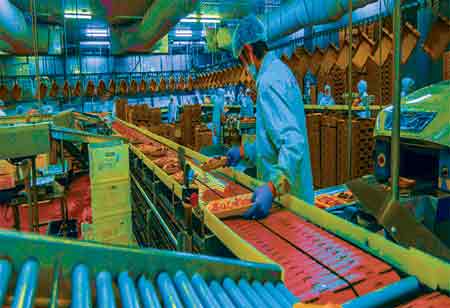THANK YOU FOR SUBSCRIBING
Be first to read the latest tech news, Industry Leader's Insights, and CIO interviews of medium and large enterprises exclusively from Food and Beverage Tech Review
Winery Software Revolutionises Every Step of Winemaking
Vineyard robotics is emerging as a game-changer in the world of winemaking, offering innovative solutions to age-old challenges and transforming the way grapes are cultivated, harvested, and turned into exquisite wines.

By
Food and Beverages Tech Review | Friday, May 10, 2024
Stay ahead of the industry with exclusive feature stories on the top companies, expert insights and the latest news delivered straight to your inbox. Subscribe today.
Vineyard robotics enhances winemaking by combining traditional techniques with advanced technology, reducing manual labor, and improving grape quality and yield through advanced sensors.
FREMONT, CA: Vineyard robotics is emerging as a game-changer in the world of winemaking, offering innovative solutions to age-old challenges and transforming the way grapes are cultivated, harvested, and turned into exquisite wines. This intersection of tradition and technology is reshaping the future of winemaking in Europe.
Vineyard robotics, incorporating the latest advancements in artificial intelligence, machine learning, and robotics, is addressing these challenges head-on. These technologies are enhancing precision and efficiency in vineyard management, ensuring the sustainability of the wine industry in the face of evolving global conditions.
Precision Agriculture
One of the key advantages of vineyard robotics is its ability to implement precision agriculture techniques. Drones equipped with advanced sensors fly over the vineyards, collecting data on soil conditions, moisture levels, and plant health. This data is then analysed to optimise irrigation schedules, fertilisation, and pest control. By precisely tailoring these factors to the specific needs of each vine, winemakers can enhance grape quality and yield.
Robotic Pruning and Canopy Management
Pruning and canopy management are crucial tasks in vineyard maintenance, influencing grape development and overall vine health. Robotic systems equipped with computer vision technology can now autonomously navigate vineyards, identifying individual vines and making precise pruning decisions. This reduces the reliance on manual labor and also ensures that each vine receives tailored attention, leading to healthier and more robust grapevines.
Automated Harvesting
Harvesting grapes at the peak of ripeness is a delicate task that requires skill and precision. Robotic harvesters, guided by sophisticated algorithms and sensors, can identify ripe grapes and selectively harvest them with minimal damage to the vines. This improves the quality of the harvested grapes and also reduces the reliance on human labor during the critical harvest season.
Weather Monitoring and Adaptation
Vineyard management is highly dependent on weather conditions, and unexpected changes can have a significant impact on grape quality. Advanced weather monitoring systems, integrated with vineyard robotics, provide real-time data on temperature, humidity, and precipitation. This information allows winemakers to make informed decisions, such as adjusting irrigation or implementing protective measures, to safeguard their crops from adverse weather events.
The Future of Winemaking
As vineyard robotics continues to evolve, it is poised to become an integral part of the future of winemaking in Europe. The synergy of tradition and technology allows winemakers to preserve the essence of their craft while embracing innovative solutions to overcome challenges. The benefits extend beyond efficiency and productivity, contributing to the sustainability of vineyards, the preservation of unique terroirs, and the production of high-quality wines that capture the essence of their regions.
Vineyard robotics is ushering in a new era for European winemaking, where the age-old traditions of cultivating and crafting wines converge with cutting-edge technology. The integration of precision agriculture, robotic pruning, automated harvesting, and weather monitoring is transforming vineyards into smart, data-driven operations. As the wine industry faces evolving challenges, vineyard robotics is proving to be a key ally in ensuring the continuity, sustainability, and excellence of winemaking in Europe.
I agree We use cookies on this website to enhance your user experience. By clicking any link on this page you are giving your consent for us to set cookies. More info







